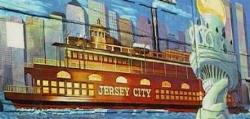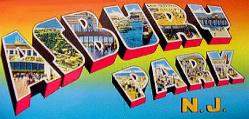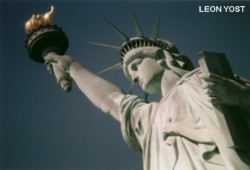 |  |  |
|
| ||
 |  |  |
 |  |  |
|
| ||
 |  |  |
|
|
Cargo ships, lighters, barges and tugs -- many loaded with explosives -- buzzed around it like so many giant bees about a honeycomb. Captain Rintelen stood there staring at this spectacle of feverish activity, like a fox having come upon a henhouse.
"What an ideal pier to destroy," he was to admit reflecting.
The "Dark Invader," as he liked to think of himself, had, however, finished his invasion. But his wish was to be granted by others who were to rub the magic lamp of sudden and all-consuming destruction the war's greatest single act of sabotage.
JULY 29, 1916, was a sultry Saturday night. The longshoremen had gone home. The switching engines, their fires cooling, stood silent on the sidings of Black Tom Pier. In nearly 100 freight cars awaiting unloading, in barges and in already half-cargoed freighters, was a bumper crop, even by Black Tom's standards, of somewhere between 2 and 4 million pounds of explosives. There were all types, from small arms ammunition to deadly TNT in bulk. No one ever knew exactly how much ammunition or the types of ammunition that were stored at Black Tom at any given moment.
One especially "sensitive" vessel was the barge Johnson 17, moored tight against the pier, in blatant violation of safety laws. It was heavy with 100,000 pounds of TNT and 417 cases of detonating fuses.
Security regulations were yawned at, and the actual policing of this lengthy pier was, at best, casual. Only six railroad detectives and two more from a private agency wandered the ill-lit labyrinth of warehouses, box cars and sidings. No gate sealed off the area. No pass system would trouble an intruder.
To wander about the pier, one had oniy to keep in the shadows. With all the warehouses, railroad cars and barges, there were plenty of shadows. The pier was a lurker's dream.
The stillness of the night was disturbed only by the troublesome drone of millions of mosquitoes. They were so bad that the guards had lighted smudge pots, again in defiance of regulations, and huddled about them. They hoped the smoke would discourage the murderous insects.
Saturday night turned into Sunday morning. The mosquitoes did not abandon their assault, merely waited, with ever-mounting appetites, on the perimeters of the smoke screen. The eight watchmen did not choose to leave the smouldering pots.
At 2:45 a.m., tongues of flame suddenly shot up from one of the loaded cars. Simultaneously, another blaze was noticed on the barge Johnson 17.
The guards, realizing that Black Tom Pier was no place for fires, started running, although one had the presence of mind to flip the switch on a lire alarm before he continued.
They pounded down the thickly creosoted planking of the long dock, across the midway bit of grubby earth and sand known as Black Tom Island, and onto the Jersey shore and Communipaw. They almost collided head-on with the first firemen to arrive at the pierhead. The fire-lighting equipment included a horse-drawn pumper, a gasoline-driven "hook-and-ladder," bearing several short lengths of ladder, and a reel of hose. Two middle-aged, obviously volunteer firemen lugged a cumbersome container of some kind of chemicals.
"What's the matter?" one of the latter two wheezed, as they set down their burden.
The guards paused, drew fresh breaths, then continued running.
Meanwhile, in nearby Bayonne, a New Jersey port of warehouses, gas and oil tanks, and tenemeny housing, the Czechoslovakian landlady of one of many 50-cents-a-night rooming houses, Mrs. Anna Rushnak, stirred uneasily in her sleep, then awoke.
Was it something in her subconscious or was it that strange boarder of hers? His name was Michael Kristoff, distantly relateti to her, a tall, slim young man of 23. His odd hours had become a matter of increasing concern to the elderly woman, ranging as they did over the entire day and night.
At this early Sunday morning hour, Mrs. Rushnak became especially curious as to his whereabouts. The hall light was burning. He hadn't come in before she retired to bed.
In these times when "spies" and "agents" might do just about anything, one couldn't be too careful. And one would do well to be suspicious of anyone, even a relative. She wondered if She shouldn't speak to her daughter, Mrs. Lulu Chapman, about him? Kristoff had also boarded with Lulu. She was still awake as the old French clock on the mantel chimed 2 o'clock. There weren't many more minutes -- just about eight, by the count, before this landlady's world started disintegrating.
At 2:08 a.m. the house shook as though an earthquake's focal point were directly below. The heavens lit up, and roared. There was a pause of seconds, then a second clap of mighty thunder.
Mrs. Rushnak pulled the sheets over her head and commenced to pray.
Millions of other residents within a radius of 50 miles of Black Tom Pier, mortally terrified, were also praying. In Manhattan, Staten Island and Brooklyn and along a 15-mile stretch of the Jersey shore, men, women and children were tossed casually out of their beds. Panes of glass were atomized in tens of thousands of homes. In all of lower Manhattan hardly a window was left in any building, including the skyscrapers.
Patrons stepping out of night clubs in New York City were brusquely hurled back against the doors by a hot, powerful
| FINAL SECTION |
 Your Ancestors' Story |
 Bruce Springsteen's Jersey Shore Rock Haven! |

|
UrbanTimes.com |